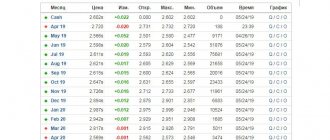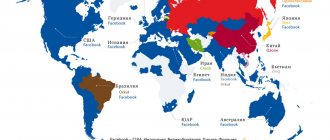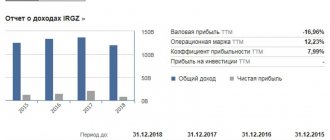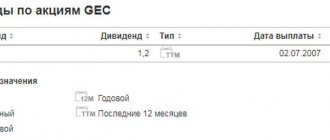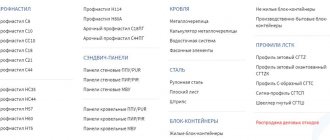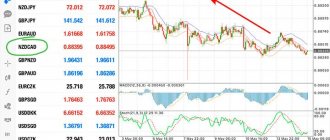Economy of the EU and Japan
Japan ranks third in the world in terms of GDP, second only to America and China. The Land of the Rising Sun produces a large number of high-quality cars that are exported throughout the world. In this regard, Japan is highly dependent on energy prices.
The Central Bank of Japan is a joint stock company in which 45 percent of the shares are owned by private individuals. Interest rates fluctuate between -0.1 and 0.1 percent, making yen loans extremely popular.
The government is battling the high value of the yen and slow inflation to keep Japanese products competitive. Previously, this was ensured through currency interventions, and many speculators could make good money by guessing the upcoming sales by the Central Bank of Japan. Nowadays, inflation is ensured through special programs - purchases of long-term bonds, as well as other assets of the Central Bank.
The Euro is the official currency of the European Union, which consists of 28 countries. All these countries form a single market, which accounts for 21 percent of global output, making it number one in terms of GDP and the world's largest exporter.
The European Central Bank controls monetary policy in all countries within the union. The ECB adheres to the same goals as the Bank of Japan, that is, it introduces stimulus programs and works to accelerate inflation.
EUR/JPY Online Chart
14.03.2021 – EUR/JPY is trading higher today from yesterday's closing price. The Euro – Japanese Yen exchange rate increased by 0.03% to 130.3175 from the previous trading session. Yesterday, the EUR/JPY rate increased by 0.29% or 0.37 (37 points) to 129.38.
Historical data : the maximum EUR/JPY rate was 402.4900 in 1975, the minimum rate was 88.8700 in 2000. The pair’s greatest growth was 11.84% in December 2000, and the largest decline was 16.27% in October 2008.
Trend on the euro/yen pair
Since 2015, the euro/yen pair has been in a bearish trend. It was at this time that the EU consumer price index fell below 0 as a result of recessions in Italy and France. There have been no significant changes since then, and the situation has only been aggravated by the skeptical sentiments of the EU member countries. Then Brexit happened, which only made the situation worse.
But the euro/yen pair did not always show a downward trend; for example, in 2012, the pair had a pronounced bullish trend.
We will not discuss the future prospects of the European Union and the euro; we will leave this for political strategists. But there is a risk of a future collapse of the EU; this fact has long been taken into account by large investors. So in the future, this pair is likely to continue its downward trend, for this reason it is recommended to look for signals for opening short positions on this pair. Of course, the trend can change its direction, but today the situation is exactly this way.
Price per pip and volatility
One point on this pair costs a little less than on the euro/dollar pair. At the time of writing, 1 point costs $0.9. Average volatility over the past two years has been 115 points, with the highest activity observed on Friday and Thursday.
The highest intraday activity is observed during the American trading session, namely at 17.00 GMT, slightly lower activity is observed during the European and Pacific sessions. I would like to immediately note that this pair does not have the same dependence on sessions as the euro and pound, so the volatility on this pair can increase at any time of the day.
Likes received: 2
Anton28r (07/10/2020), FelixDavidovi4 (08/09/2020)
In April, the EUR/JPY currency pair began moving in a northerly direction and has already grown by more than 250 points.
The H4 chart shows that on Friday the pair almost entered the 131 figure, and on Monday it will begin a new trading week in the middle of the 130 figure between the support levels of 130.49 and 130.03 and resistance levels of 130.97 and 131.43. Indicators indicate that on Monday the pair can be sold towards support levels, as the pair needs a correction.
Last week there was an increase in the EUR/JPY pair, which can be explained not so much by an increase in demand for the euro currency, but by a drop in investor interest in the Japanese yen. At the end of trading, buyers broke away from the bottom of the 130th figure and reached the bottom of the 131st, which caused a rebound. The MACD indicator indicates the priority of upward movement. The return of buyers to the market will allow the resumption of long positions. The main target for purchases is the correction level of 134.15 (100.0%).
Correlated currency pairs
The strongest correlation is observed with the dollar/yen pair on the H4 time frame. So if the received signal on the euro/yen pair was confirmed by a signal on the dollar/yen pair, you should get ready to enter the market.
The dollar/yen correlates with the Japanese stock market, namely the Nikkei 225 index.
Thus, the euro/yen will also correlate with this index, since this pair has a close correlation with the dollar/yen pair.
The dollar/yen pair also correlates with oil, which can also be used when trading the euro/yen pair.
EUR/JPY – Technical Analysis
| EURJPY | M30 | H1 | H4 | D | W | M |
| RSI(14) | purchase 58.2100 | purchase 57.3240 | purchase 56.1870 | purchase 66.1700 | purchase 65.7970 | purchase 60.8160 |
| STOCH(9,6) | neutral 45.2380 | purchase 66.9110 | purchase 61.3900 | purchase 62.2380 | purchase 62.5550 | purchase 74.7790 |
| MACD(12.26) | purchase 0.0200 | purchase 0.0400 | purchase 0.0700 | purchase 0.6200 | purchase 1.5600 | purchase 0.7400 |
| ADX(14) | neutral 18.8080 | purchase 24.3070 | purchase 26.5470 | purchase 49.1510 | purchase 44.5880 | purchase 34.8490 |
| CCI(14) | purchase 152.3656 | purchase 129.4564 | purchase 93.2590 | purchase 85.2388 | purchase 188.8543 | purchase 135.9545 |
| Highs/Lows(14) | purchase 0.0232 | purchase 0.0489 | purchase 0.0175 | purchase 0.1904 | purchase 1.6064 | purchase 4.3489 |
| Ultimate Oscillator | sale 48.8860 | neutral 50.2650 | purchase 52.8050 | sale 46.3300 | purchase 58.2190 | purchase 53.4480 |
| Bull/Bear Power(13) | purchase 0.1300 | purchase 0.1400 | purchase 0.1480 | purchase 0.9840 | purchase 3.9070 | purchase 7.9930 |
| Sales | 1 | 0 | 0 | 1 | 0 | 0 |
| Purchases | 5 | 7 | 8 | 7 | 8 | 8 |
| Bottom line | purchase | purchase | purchase | purchase | purchase | purchase |
Features of trading the euro/yen pair
I have already talked about strategies based on correlation in my previous articles. Today I will tell you about the features of trading the euro/yen pair. This currency pair is rightfully considered universal, as it is suitable for both scalping and long-term trading.
Based on its popularity among traders, it can be concluded that intraday trading is more successful than trading on daily charts. On the euro/yen pair on the hourly chart there are few stable trends due to regular emissions. But on the daily chart, long-term trends are obvious.
Many traders claim that technical indicators work well on this pair to identify a trend. It is precisely because of regular emissions that indicators that lag on other pairs work perfectly here. So if you know the indicator strategy, then it’s worth trying it on the euro/yen pair.
In addition, due to good volatility compared to the euro/dollar pair, the euro/yen pair exhibits clearer and longer-term trends.
When using this currency pair on short time intervals, you should increase Stop-Loss to prevent them from being knocked out. Large Stop-Loss is recommended for use on time intervals up to H4 inclusive.
If you prefer to trade on “outliers”, then you should open opposite orders with a small Take-Profit after long tails and shadows. A similar approach to opening orders can be used both when trading intraday and when working on daily time intervals.
Breakout strategies work great on this currency pair, which involve creating positions after the price leaves the consolidation area. This is because areas of consolidation on this currency pair can be identified simply by looking at the trading chart. If you are going to use any tools, they should be optimized to take shadows and tails into account.
On the chart of a currency pair, you can quite easily find candlestick combinations such as a descending flag and an ascending flag, which can be used to create positions.
General characteristics of the tool
This pair represents a cross quote, which means selling or buying European currency for the yen. Thus, if the quote price is 118.60, then this means that 1 euro is worth 118.60 yen.
This currency instrument is most often called a currency haven and is often compared to the USD/CHF pair, which is a fairly conservative quote.
This instrument has a fairly high spread of 4-6 pips. This is due to the fact that the currency conversion method is not carried out directly, but goes through the American dollar.
If we add to this the fairly high volatility of the pair, then we can say with confidence that trading in EUR/JPY is considered quite risky.
That is why trading beginners are not recommended to open transactions on this quote without the appropriate experience and knowledge.
Conclusion
From everything said above, we can conclude that the euro/yen currency pair is universal, since it can be used for both intraday and medium-term trading.
In order for the trading process to bring the desired result, you should definitely take into account tails and spikes that can knock out the established Stop-Loss. To ensure the required level of security, it is recommended to use larger Stop-Loss.
An important advantage of the pair we are considering is that it is characterized by more pronounced trends, which significantly simplifies the process of performing the analysis.

